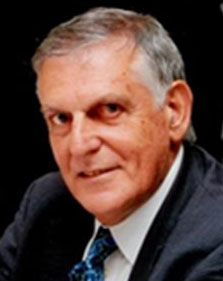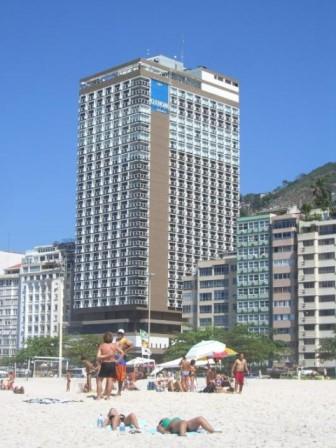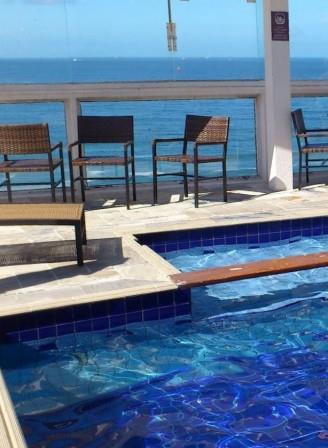ORALS
SESSION: ManufacturingMonPM2-R4
Precision / Ultraprecision Manufacturing | Mamalis International Symposium on Advanced Manufacturing of Advanced Materials and Structures with Sustainable Industrial Applications |
| Mon Nov, 5 2018 / Room: Sao Conrado (50/2nd) | |
| Session Chairs: Tatsuo Sawada; Session Monitor: TBA |
16:20: [ManufacturingMonPM210]
Concurrent Method for Design of Sustainable Multi-stage Manufacturing Processes Sesh
Commuri1 ; Jelena
Milisavljevic
2 ; Farrokh
Mistree
2 ; Janet
Allen
2 ;
1University of Nevada, Reno, Reno, United States;
2University of Oklahoma, Norman, United States;
Paper Id: 261
[Abstract] Multistage manufacturing processes (MMPs) are networked manufacturing systems that have characteristics of mechanical and control systems where different manufacturing operations are performed at each stage [1]. Changing product requirements as well as desire for agility in the manufacturing process impose restrictions on the design of MMPs that could ultimately affect the sustainable operation of the manufacturing process. Some of the challenges that have to be addressed in the design of sustainable MMPs are:<br />- the understanding of the functional attributes of the mechanical and control systems that comprise the MMP and their effect on the properties of the MMP [2];<br />- the selection of sensors and tools and their effect on the dimensional quality of the finished product;<br />- the influence of computational complexity in representing and analyzing the problem [3]; and<br />- manage uncertainty in the models used to represent the MMP which limit the use of traditional design approaches [4]. <br />In this paper, an exploration-based method for the concurrent design of MMPs under uncertainty is presented wherein the attributes of tools and sensors are treated as design variables, thereby allowing the design engineer to assess the impact of design parameters on the performance and ultimately, the sustainability of the manufacturing process. The method is based on the compromise Decision Support Problem (cDSP) construct [5] for MMP, where MMP is described by a Stream of Variation (SoV) model [6]. The proposed method is illustrated using an example of automotive panel stamping process [7].
References:
[1] Shi, J., and Zhou, S., 2009, 'Quality Control and Improvement for Multistage Systems: A survey', IIE Transactions, Vol. 41, no.9, pp. 744-753.
[2] Milisavljevic, J., 2015, 'Accounting for Uncertainty in the Realization of Multistage Manufacturing Processes', Masters Thesis, The School of Aerospace and Mechanical Engineering, University of Oklahoma, Norman, Oklahoma.
[3] Milisavljevic Syed, J., Allen, J.K., Commuri, S., and Mistree, F., 2018, 'A Method for the Concurrent Design and Analysis of Networked Manufacturing Systems under Uncertainty,' Journal of Engineering Optimization, accepted for publication.
[4] Milisavljevic, J., Commuri, S., Allen, J.K. and Mistree, F., 'Concurrent Design Exploration Method (CDEM) of Networked Manufacturing Systems', ASME International Design Engineering Technical Conferences, Cleveland, Ohio, Paper number DETC2017-67557, August 6- 9, 2017.
[5] Smith, W.F., Milisavljevic, J., Sabeghi, M., Allen, J.K. and Mistree, F., 'Accounting for Uncertainty and Complexity in the Realization of Engineered Systems,' ASME International Design Engineering Technical Conferences, Boston, Massachusetts, Paper number DETC2015-46211, August 2-5, 2015.
[6] Ding, Y., Ceglarek, D., and Shi, J., 2000, 'Modeling and Diagnosis of Multistage Manufacturing Processes: Part I - State Space Model', In Proceedings of the 2000 Japan/USA Symposium on Flexible Automation, pp. 23-26.
[7] Apley, D., W., and Shi, J., 1998, 'Diagnosis of multiple fixture faults in panel assembly', Journal of Manufacturing Science and Engineering, vol. 120, pp. 793-801.
SESSION: ManufacturingWedAM-R4
Transport / Crashworthiness of Vehicles: Passive and Active Safety | Mamalis International Symposium on Advanced Manufacturing of Advanced Materials and Structures with Sustainable Industrial Applications |
| Wed Nov, 7 2018 / Room: Sao Conrado (50/2nd) | |
| Session Chairs: Ryuichi Tomoshige; Session Monitor: TBA |
12:10: [ManufacturingWedAM03]
Challenges in Engineering Devices that Promote Natural Gait in Amputees Sesh
Commuri1 ; Bhanu Prasad
Kotamraju
2 ;
1University of Nevada, Reno, Reno, United States;
2University of Oklahoma, Norman, United States;
Paper Id: 266
[Abstract] State-of-the-art in prosthetic design for below-knee or transtibial amputees is based primarily on the biomechanics of linear walking on level surfaces [1-3]. Existing foot/ankle prostheses tend to be passive devices that cannot accommodate the demands of changing user gait or changes such as surface and slope of the terrain. Limitations on gait imposed by inadequate prosthetic devices can result in musculoskeletal pain and sores that adversely affect the health of the individual [1, 4-6]. Gait asymmetry can also lead to hip/knee replacement surgeries over time. Although some designs recognize the importance of active prosthetic devices, their implementation is complicated due to lack of functional requirements that address user gait under all conditions [7-8]. Recent developments in biomimetic control have resulted in exciting new control strategies that improve the performance of complex systems with human agents [9-10].
While there have been significant advances made in surgical techniques, post-surgical recovery, design and fitting of prosthetic sockets, there has been limited impact on the health outcomes for the amputee. One of the main reasons for the limited improvement is because the available devices cannot easily adapt to user requirements or environments. Fully functional prosthetic feet require real-time detection of gait events to synthesize desired ankle displacements for each gait cycle to mimic natural human locomotion. Dynamic models of human-prosthetic limb system and the foot-ground interaction are also required to implement controllers that can reduce tracking error over each gait cycle (short term objective), while improving the performance over time (long term objective). In this paper, we highlight several of the challenges that have to be addressed in the design of next generation “intelligent” prosthetic devices for transtibial amputees.
It is anticipated that the challenges identified in this paper will pave the way to developing a comprehensive solution to the design and control of computer controlled prosthetic ankles and establish benchmarks for their evaluation.
References:
[1] Hansen, A.H., D.S. Childress, S.C. Miff, S.A. Gard, and K.P. Mesplay. The human ankle during walking: Implications for design of biomimetic ankle prostheses. Journal of Biomechanics, 2004. 37: p. 1467-1474.
[2] Winter, D.A. Energy Generation and Absorption at the Ankle and Knee during Fast, Natural, and Slow Casdence. Clinical Orthopaedics and Related Research, 1983. 175: p. 147-154.
[3] Bateni, H. and S.J. Olney. Kinematic and kinetic variations of below-knee amputee gait. Journal of Prosthetics and Orthotics, 2002. 14(1): p. 2-13.
[4] A. Mai, S. Commuri, C.P. Dionne, J. Day, W.W.J. Ertl, and L.J. Regens. Effect of prosthetic feet on end-bearing characteristics in users with Transtibial Osteomyoplastic Amputation. Journal of Prosthetics and Orthotics, 2013. 25(3): p. 151-158.
[5] A. Mai, S. Commuri, C.P. Dionne, J. Day, W.W.J. Ertl, and L.J. Regens. Effect of Prosthetic Feet on End-bearing Characteristics in an otherwise Healthy Male with Transtibial Osteomyoplastic Amputation. Journal of Prosthetics and Orthotics, 2012. 24(4): p. 211-220.
[6] B.P. Kotamraju, S. Commuri, A. Mai, C.P. Dionne, J. Day, K. Veirs, W.W.J. Ertl, and B. Smith. Comparative Study of Residual Muscle Activity in Transtibial Amputees with Osteomyoplastic Amputation and Conventional Amputation during Varied Walking Tasks. Journal of Prosthetics and Orthotics, 2018 (to appear).
[7] Jimenez-Fabian, R. and O. Verlinden. Review of control algorithms for robotic ankle systems in lower-limb orthoses, prostheses, and exoskeletons. Medical Engineering & Physics, 2012. 34(4): p. 397-408.
[8] Rai, J.K., R.P. Tewari, and D. Chandra. Hybrid control strategy for robotic leg prosthesis using artificial gait synthesis. International Journal of Biomechatronics and Biomedical Robotics, 2009. 1(1): p. 44-50.
[9] Commuri, S., and A. Mai. Intelligent control of prosthetic ankle joint using gait recognition, in Recent Advances and Future Directions in Adaptation and Control, Editors Sarangapani, J., and K.G. Vamvoudakis, 2016. Elsevier Publications. p. 635-660.
[10] A. Mai and S. Commuri. Robust Control of Prosthetic Ankle through the Integration of User Intent. IFAC Journal of Control Engineering Practice, 2016. vol. 49, pp. 1-16.



















